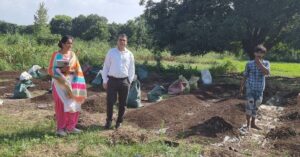Buy and ‘Plant’ This Special Rakhi To Help Save a Farmer from Poverty
This Rakshabandhan get to know what goes into making the thread that binds – the farmers, weavers and spinners behind the scenes.
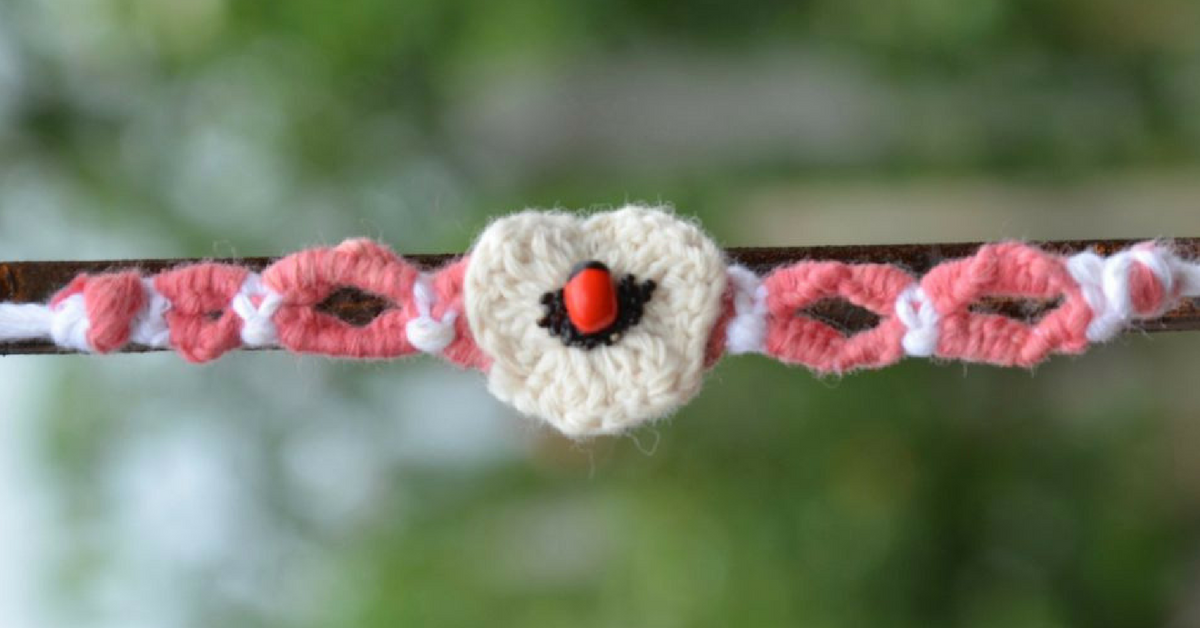
This Rakshabandhan get to know what goes into making the thread that binds – the farmers, weavers and spinners behind the scenes. You can also grow a small plant from the seed encased in this very special rakhi.
Ever wonder where the cotton used to make your branded kurta was grown? Or who was the weaver who crafted your beautiful hand woven duppatta?
Have you given any thought to the question why 2 lakh farmers in India, mostly cotton growers, have committed suicide in the past two decades even though you’ve been paying hefty prices for the cotton products you buy? Or why more than 1 lakh textile mill workers have lost their jobs in Mumbai alone, when the textile industry is one of the fastest growing industries in our country?
If you haven’t looked for these answers, it doesn’t mean you are insensitive. It just means that we now live in a society where the producers of everyday products and their consumers have grown increasingly apart. We hardly know anything about the farmers growing our food or the weavers weaving our clothes and, unknowingly, we have become part of the system that exploits them.
Today, India is the second biggest producer of cotton globally. The East Asian region is the birthplace of two different species of cotton. Yet, more than 95% of the cotton grown here is the American Genetically Modified (GM) cotton, which is not indigenous to our region and is ecologically damaging. This has economic implications for the cotton farmers as well because the seeds for this cotton are patented and the farmers have become completely dependent on the seed companies in order to farm.
Similarly, innumerable spinners and weavers have lost their jobs due to the monopoly of textile mill owners. The textile mills have machines that can do the job of 60 spinners at a time. This has affected the livelihoods of spinners and weavers.
It’s time that we look beyond the names of the brands we are wearing – that we get to know the names of the cotton growers, spinners and weavers too. We need to protect these farmers and craftsmen before we lose them completely.
The Gram Art Project has started an initiative that aims to do just that, by creating unique rakhis that tell the story of these labourers and workers.
For the first time ever, consumers will get to know where the cotton for the rakhis they are buying was grown, how the yarn was made and who has woven and designed the finished products. Not only this, the buyers will also get an indigenous seed along with the rakhi, to grow a plant that represents the blooming of the relationship between a brother and sister.
Growing the raw material
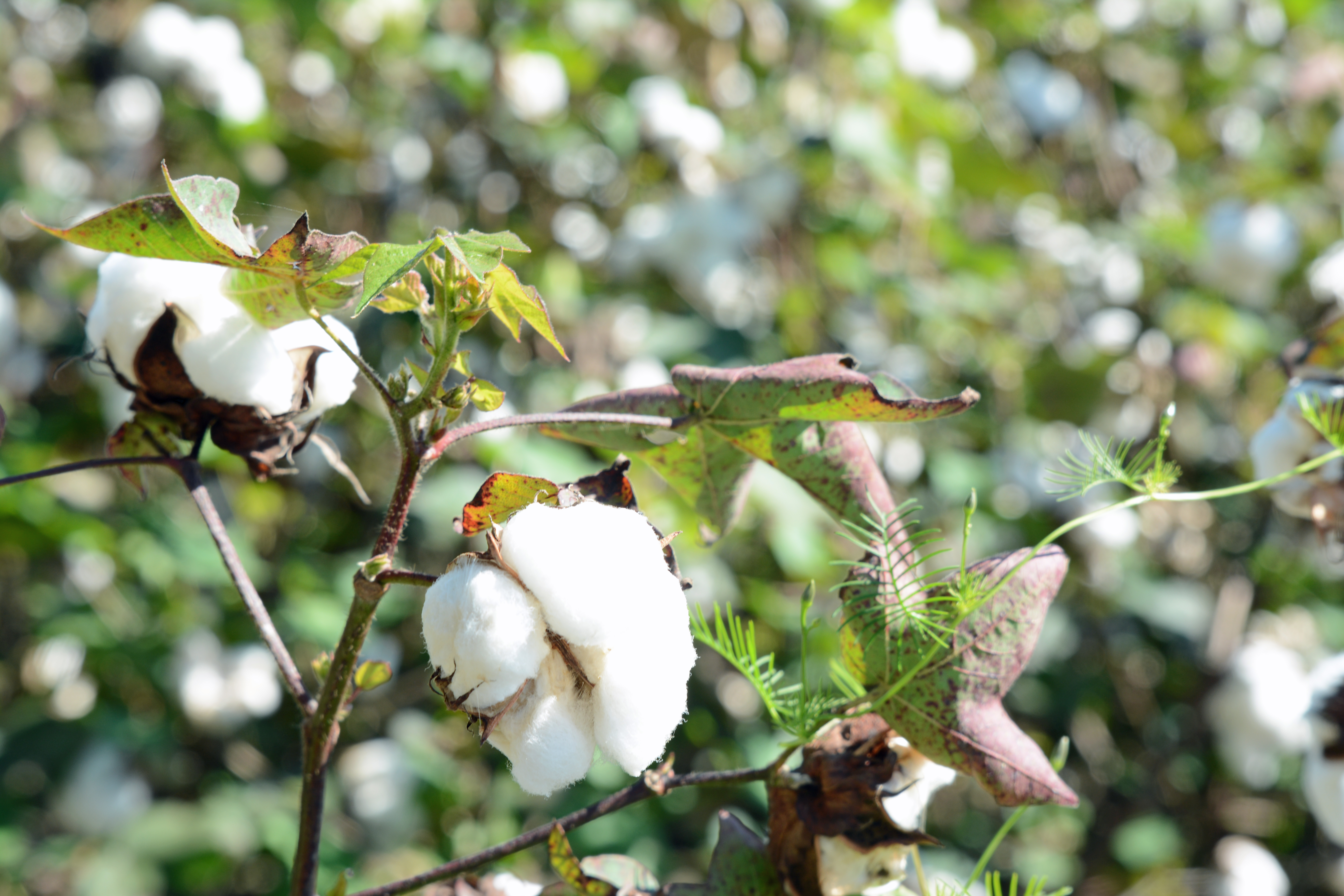
Image for representational purpose. Source – Wikipedia
Cotton of two varieties, AKA-7 and Anand 1, is used as raw material for the rakhis.
Anand 1 is a farmer bred variety of cotton grown by a farmer named Anandrao Patil-Chiwalikar from the Nanded district of Maharashtra.
The cotton with these seeds is also grown by the farmers of Gram Sewa Mandal, Wardha, Maharashtra.
AKA-7 is grown by many farmers in Akola district.
The pre-spinning process

Picture source
The entire process of pre-spinning (roving cotton to sliver) takes place at Gram Sewa Mandal (GSM), Wardha.
The cotton sliver is spun by the women of Wardha on ambar charkhas by hand. The sliver bobbins made on the Simplex machine are placed on charkhas and hand spun to make yarn.
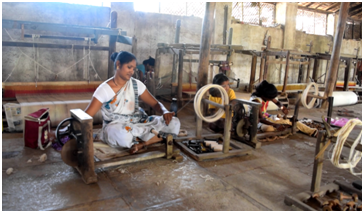
The colours of the rakhis

Dyeing is done with natural colours at the Rangaai Unit of Magan Sangrahalay, a khadi Institute in Wardha. And so, the coloured yarn is readied for the rakhi.
Designing the rakhi
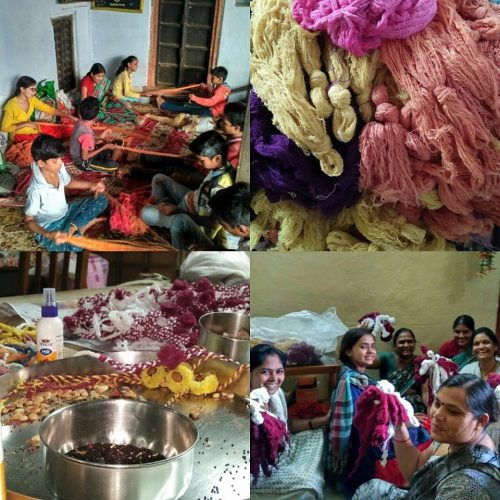
The coloured yarn is taken to Paradsinga village in Madhya Pradesh where Nutan Dwivedi, a second year B.Sc. student, teaches 50 women from four nearby villages of Khairi, Paradsinga, Satnoor and Kelwad how to make the rakhis.
“Most of these women are housewives or farm labourers. They are thrilled with the little extra income they are earning by making these rakhis. Moreover, they tell me they don’t have to buy rakhis any more for their brothers,” says Nutan
After the rakhis are made, indigenous seeds for plants that will be useful in a kitchen garden are attached to their centres. The seeds could be lentil, vegetable or even cotton seeds at times.
“We have pasted chawali bhaji seeds on every rakhis to ensure it grows and with it a seed of creeper, big and small trees and plants are also pasted. seeds: bel, gunj, ambadi, corn, mustard, chawalai, amaltash, parijatak,” says Shweta Bhattad from Gram Art Project.
And the rakhis are ready!
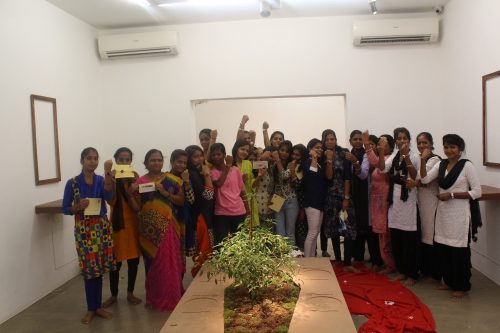
“I am a housewife. My children are so excited to see me doing something creative and earning money too. I request people to buy our rakhis so we may have more work in the future,” says Suman Humne.
The rakhis can be purchased online from here. The cost includes the cost of raw material, labour and packaging. Shipping charges are levied based on the place of shipping.
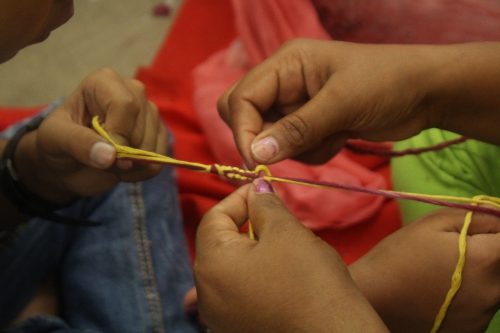
You can order the rakhis by sending a mail to [email protected]
Happy Rakshabandhan!

Like this story? Have something to share? Email: [email protected], or join us on Facebook and Twitter (@thebetterindia). To get positive news on WhatsApp, just send ‘Start’ to 090 2900 3600 via WhatsApp.
If you found our stories insightful, informative, or even just enjoyable, we invite you to consider making a voluntary payment to support the work we do at The Better India. Your contribution helps us continue producing quality content that educates, inspires, and drives positive change.
Choose one of the payment options below for your contribution-
By paying for the stories you value, you directly contribute to sustaining our efforts focused on making a difference in the world. Together, let's ensure that impactful stories continue to be told and shared, enriching lives and communities alike.
Thank you for your support. Here are some frequently asked questions you might find helpful to know why you are contributing?


This story made me
-
97
-
121
-
89
-
167




